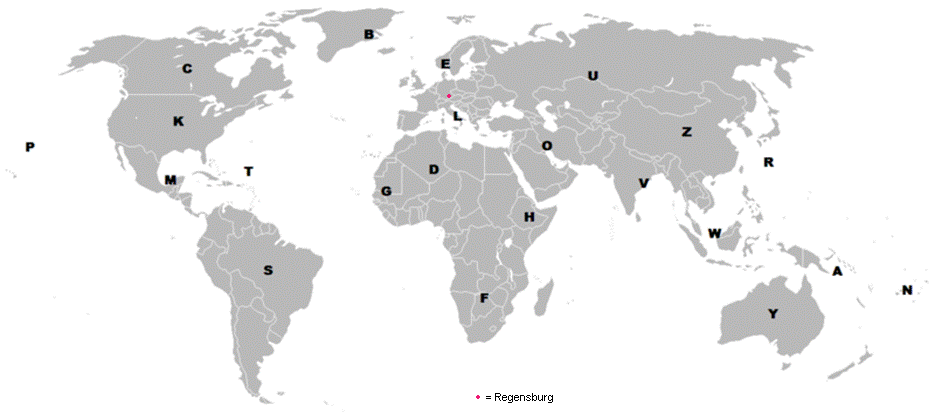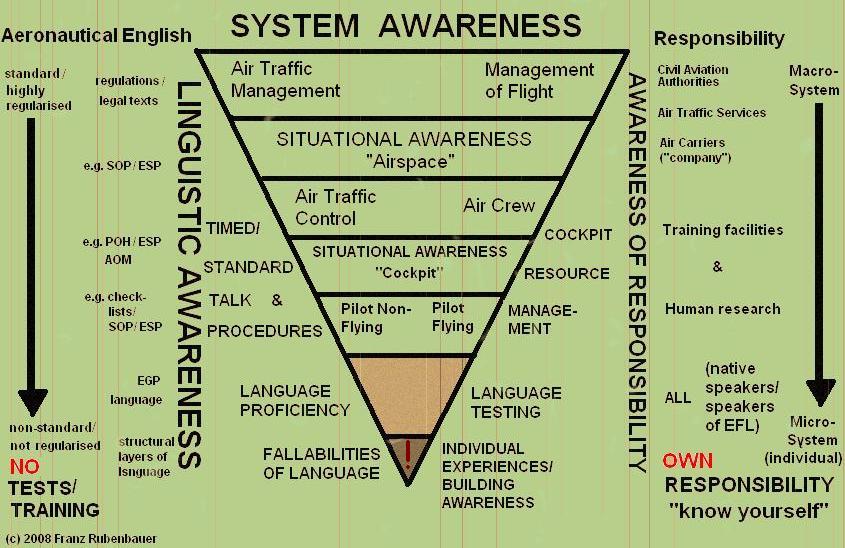The survey was about the awareness of the fallibility of the (English) language of pilots and air traffic controllers. For gaining data, pilots, controllers, civil aviation authorities and flight schools in more than 152 ICAO regions were informed via emails, internet forums, advertisements in relevant magazines, or by contacting them directly.
In the following you have the opportunity to familiarize yourself with important facts and some results of the survey:
The questions and the most interesting answers given: answers of all 156 participants
About the allocation of people interested in the survey:
Each yellow spot in the world map stands for a place from where www.aero-lingo.com have been looked at, which totals 78 countries.

(Source: www.neoworx.net)
Return rate of questionnaires: Questionnaires have returned from 28 countries. For more information click here.
More detailed information: The following map of world regions is classified according to the first letter of the ICAO four-letter identifier. To learn more about participants and response rate click on the appropriate letter.

Implications
Since within the aeronautical communication SYSTEM different people and official bodies take part, each one has to know his or her RESPONSBILITY in terms of linguistic pitfalls that may inhibit SITUATIONAL AWARENESS (i.e. the mental picture of the air traffic situation and the operational status of an aircraft within airspace). The figure below summarises my approach to oral English communication in aviation, that is, the structural layers or “basic elements” of language that have to be looked at in order to gain LINGUISTIC AWARENESS. By combining linguistic and aeronautical terminology the figure illustrates the aeronautical SYSTEM in which communication takes place on its communicative levels. When going down from the upper to the lower level both the operational situation and the form of English gradually turn from a “standard/ highly regularised” to a “non-standard/ not regulated” one. During standard situations this stretches from highly regulated legal texts, regulations and scripted SOPs in the form of written documents (AOM, POH, checklists) or spoken standard callouts using English for Specific Purposes (ESP). In non-standard situations, however, it is necessary to go beyond Standard Phraseology (SP) - the verbal tool within the “timed standard talk and procedures” in the figure below- by using English for General Purposes (EGP) or plain English. However, the small corner piece (small inverted triangle with exclamation mark) at the very bottom of the inverted triangle resembles the linguistic area which is hardest to be controlled, because here miscommunication takes place subconsciously on the level of every single pilot or controller.
Figure: Contingencies of oral English communication in aviation
The distribution of RESPONSIBILITY for linguistic matters corresponds to how standardised aeronautical texts and talks can actually be; civil aviation authorities (CAA), air traffic services and airlines are responsible for legal texts or regulations in a broader sense, whereas training facilities rely on human research to manage the scripted and pre-coded communication on the operational level of a cockpit or an ATC unit. Despite the fact that testing requirements of general language proficiency is initiated by administrative units, such as ICAO and national CAAs, the RESPONSIBILITY for gaining adequate language proficiency, which should include AWARENESS OF LANGUAGE USE itself, must be shared by all participants in aeronautical communication - be it single native or non-native speakers, authorities or aeronautical pressure groups. In the very end, it is only the individual pilot and controller who can make the difference when counteracting miscommunication because of ambiguities, if he or she knows about the ambiguities within each structural layer of language. The final statement must be an appeal to sharpen awareness of these insidious linguistic ambiguities addressed at all pilots and controllers: “KNOW YOURSELF!”
